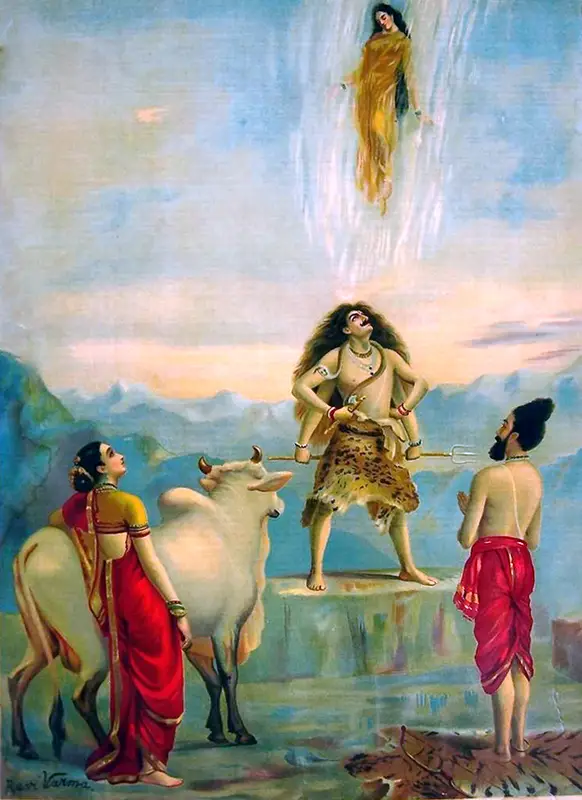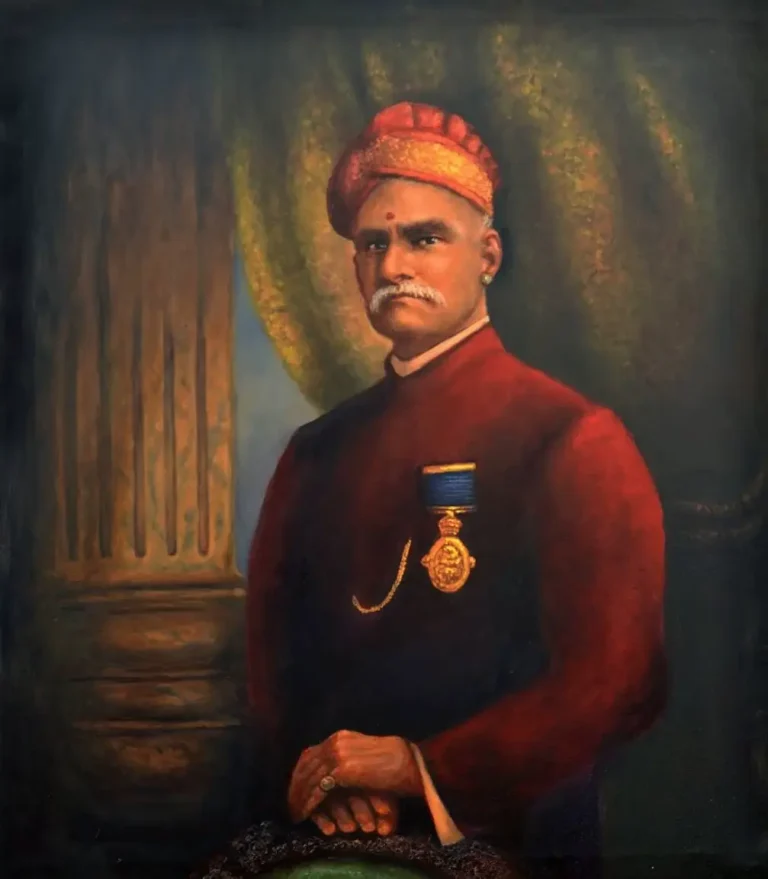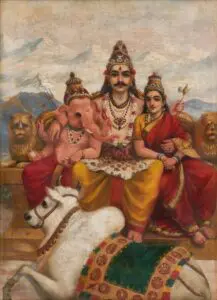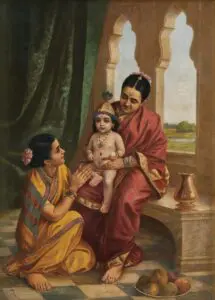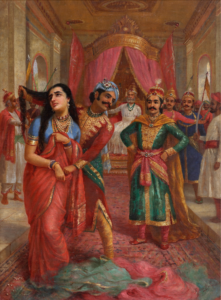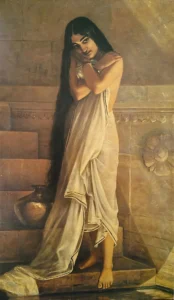Descent Of Ganga
The Ganga Avataran or Descent of Ganga by Raja Ravi Varma is a remarkable artwork steeped in Hindu mythology, showcasing the divine intervention of Lord Shiva in controlling the powerful Ganga river. Crafted around 1890 and released by Ravi Varma Press in 1910, it employs the oleograph technique to merge lush Indian narratives with European Academic style. The painting is notable for Varma’s talent in embodying mythological tales with lifelike detail and emotional depth. This piece reinforces Varma's pivotal role in Indian art, popularizing Hindu mythology and enriching India's cultural heritage.
Late 19th Century to Early 20th Century
About the Artwork
Did You Know
Liked what you see? Add it to your collection.
Enjoyed reading? Share it.
... continued
Subject Matter
The painting depicts a scene from Hindu mythology where the river Ganga descends from heaven to earth. The story revolves around Bhagiratha, who performs a severe penance to absolve his ancestors' sins. Lord Brahma grants his wish, and Ganga begins her descent. However, to prevent the powerful river from destroying everything, Brahma advises Bhagiratha to pray to Lord Shiva for help. Shiva, with his dreadlocks, controls the flow of Ganga by directing it into his hair.
Composition
The painting shows Lord Shiva standing upright, controlling the flow of Ganga with his hair. Bhagiratha is depicted in a pose of absolute devotion. Shiva's consort, Parvati, is shown leaning casually on Nandi, Shiva's mount, while observing the scene. The contrast between Shiva's angry pose and Parvati's benign look adds depth to the narrative.
Medium and Style
The artwork is an oleograph, a technique that combines lithography and photography to produce a print that resembles an oil painting. It is characteristic of Raja Ravi Varma's style, which blends traditional Indian themes with European Academicism.
Significance
This painting is one of Raja Ravi Varma's prominent works, reflecting his ability to capture mythological themes with great detail and emotion. It remains a celebrated piece in Indian art, highlighting Varma's contribution to popularizing Hindu mythology through his art.




